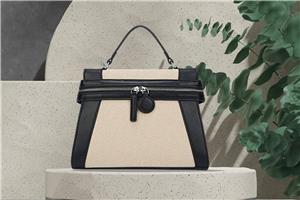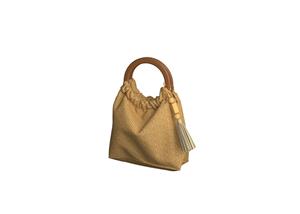El mejor cordón de macramé: los mejores materiales para crear un bolso de macramé
El mejor cordón de macramé: los mejores materiales para crear un bolso de macramé
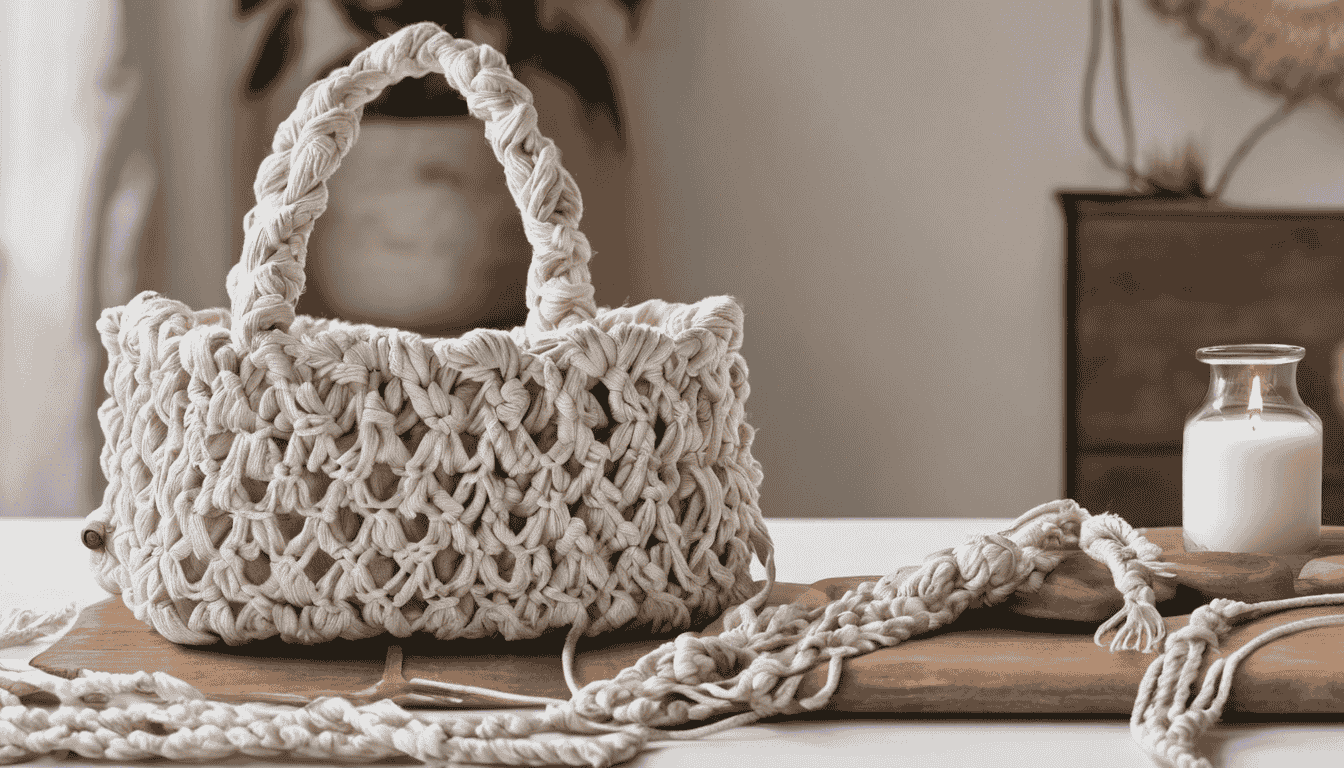
Elegir el cordón de macramé adecuado es un paso fundamental a la hora de crear unbolsaQue no solo destaca estéticamente, sino que también perdura en el tiempo. El macramé, el arte de anudar hilos en patrones para crear artículos decorativos, ha ganado popularidad, y los bolsos de macramé encabezan las listas de tendencias. La durabilidad, la textura y el aspecto del producto final dependen en gran medida del tipo de cordón de macramé utilizado, por lo que es esencial seleccionar el mejor. Desde trenzado hasta retorcido, la variedad de texturas de cordón de macramé, como las de 3 capas y las de una sola hebra, ofrece una creatividad ilimitada a los artesanos.
Este artículo profundiza en la variedad de materiales disponibles para el cordón de macramé, guiándote para tomar una decisión informada al elegir tu cordón de algodón o cualquier otro material. Exploraremos las características y beneficios de los cordones de algodón, nailon, yute, poliéster y cá?amo. Cada uno de estos materiales ofrece diferentes aspectos de la creación de bolsos de macramé, desde durabilidad y resistencia hasta textura e impacto ambiental. Ya sea que busques el mejor cordón para macramé: suave al tacto, sostenible o de máxima durabilidad, este resumen te brindará la información necesaria para elegir el hilo de macramé adecuado para tu proyecto.
Cordones de algodón
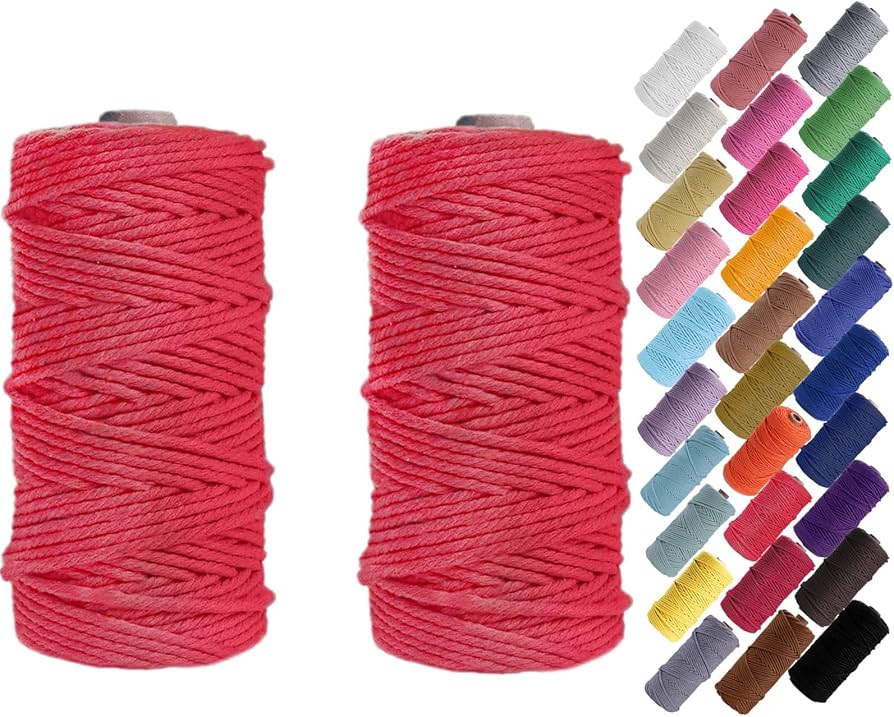
Los cordones de algodón son reconocidos por su versatilidad y funcionalidad en diversas aplicaciones, incluido el macramé. Reconocidos por su resistencia y durabilidad, estos cordones pueden...?soportar un desgaste significativo, lo que los convierte en una opción confiable para elaborar bolsos de macramé duraderos.
Ventajas de usar cordones de algodón
Los cordones de algodón ofrecen varias ventajas distintivas que los convierten en una opción popular entre los artesanos. Su transpirabilidad y suavidad naturales garantizan una experiencia de creación cómoda, mientras que su durabilidad garantiza la durabilidad de los productos creados. El atractivo estético de los cordones de algodón, caracterizado por su textura natural y variaciones de color, a?ade un toque rústico a cualquier proyecto de macramé.
Marcas populares de cordones de algodón
Varias marcas destacan en el mercado por sus cordones de algodón de alta calidad.?ParacordPlanet, Stringking y Atwood Rope MFG?Se encuentran entre las marcas más respetadas, conocidas por sus dise?os innovadores y su compromiso con la satisfacción del cliente. Estas marcas ofrecen una variedad de cordones de algodón que se adaptan a diferentes necesidades de artesanía, garantizando altos estándares de calidad y rendimiento.
Consejos para trabajar con cordones de algodón
Al trabajar con cordones de algodón, es fundamental manipularlos adecuadamente para conservar su integridad y apariencia. Almacenarlos lejos de la humedad excesiva y la luz solar directa ayuda a preservar su calidad. Además, usar las herramientas de corte adecuadas garantiza un corte limpio, esencial para un trabajo de macramé preciso. Estas prácticas ayudan a prolongar la vida útil de los cordones y a mantener su atractivo estético.
Los cordones de algodón, con su combinación de funcionalidad y atractivo estético, son una excelente opción para confeccionar bolsos de macramé. Su capacidad para?sujetar bien los nudos?Y la facilidad de incorporar varios dise?os los convierte en un material ideal tanto para artesanos principiantes como experimentados.
Cuerdas de nailon
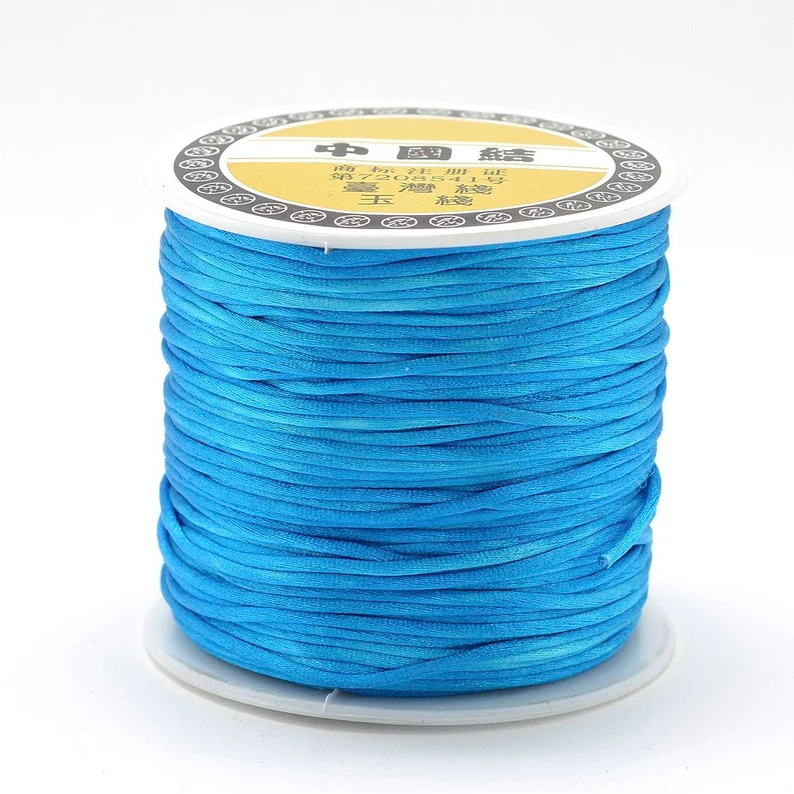
Beneficios de los cordones de nailon
Los cordones de nailon, reconocidos por su durabilidad y sutil brillo, aportan una estética única a los proyectos de macramé. Estos cordones son especialmente apreciados por su resistencia al deshilachado y su robustez, lo que los convierte en una opción fiable para artículos que requieren una larga vida útil. El material es flexible y resistente, ideal para proyectos donde la durabilidad es tan importante como la apariencia.
Los mejores proyectos para cordones de nailon
Los cordones de nailon son los más adecuados para proyectos de manualidades que exigen un material resistente.?Originalmente dise?ado como una línea de suspensión de paracaídas.El paracord de nailon es excelente para usos múltiples, como cuerdas para escalada y multiusos. Su capacidad para sujetar bien los nudos y desatarlos fácilmente lo hace perfecto para practicar nuevos nudos de macramé, especialmente para principiantes que podrían necesitar deshacer y rehacer su trabajo a medida que aprenden.
Practicando nudos con cuerdas de nailon
Para quienes se inician en el macramé, los cordones de nailon ofrecen un excelente medio para experimentar. La facilidad para desenredar nudos sin da?ar el cordón los hace ideales para principiantes. Practicar con nailon ayuda a dominar varios nudos esenciales para el macramé, como el nudo cuadrado y el nudo espiral, sin la frustración de errores permanentes, lo que proporciona una curva de aprendizaje flexible para principiantes.
Cuerdas de yute
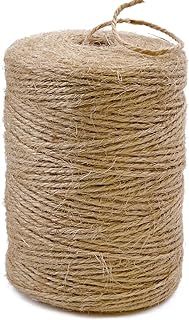
Características de los cordones de yute
Las cuerdas de yute son famosas por su?apariencia auténtica y terrosa?Su textura rugosa los convierte en la opción predilecta para quienes valoran la estética natural en sus proyectos. Estos cordones son reconocidos no solo por su encanto rústico, sino también por sus cualidades ecológicas, que se complementan a la perfección con la artesanía respetuosa con el medio ambiente. La resistencia de los cordones de yute los hace adecuados para diversas aplicaciones, especialmente en proyectos que requieren...?Material robusto capaz de soportar un uso regular.?y desgaste.
Los mejores usos para los cordones de yute
Los cordones de yute son?Ideal para crear artículos que combinen a la perfección con una decoración inspirada en la naturaleza.Como maceteros, tapices y atrapasue?os. Su textura aporta profundidad y carácter a cada pieza, realzando su atractivo visual. Para los artesanos que buscan un toque bohemio o natural, los cordones de yute ofrecen un medio versátil para explorar diferentes técnicas de anudado, lo que permite crear artículos únicos y personalizados.
Cómo seleccionar el cordón de yute adecuado
Al elegir cordones de yute para proyectos de macramé, es fundamental considerar los requisitos específicos del proyecto. Por ejemplo, el grosor y la flexibilidad del cordón pueden influir significativamente en la facilidad de anudado y el aspecto final de la artesanía. Los artesanos deben optar por cordones de yute de alta calidad, resistentes y duraderos, para garantizar la durabilidad de sus creaciones, especialmente para artículos como bolsos de macramé, que pueden someterse a un uso intensivo. Además, es recomendable seleccionar cordones con un grosor uniforme para mantener la consistencia durante todo el proceso.
Cordones de poliéster
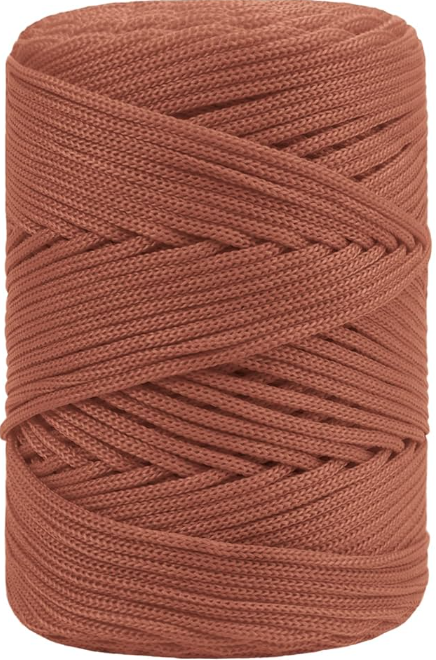
?Por qué elegir cordones de poliéster?
Los cordones de poliéster destacan en el mundo del macramé por su combinación de durabilidad y atractivo estético. Ofrecen durabilidad y un aspecto pulido, lo que los hace ideales para proyectos donde el estilo y la durabilidad son cruciales. El sutil brillo del poliéster a?ade un toque contemporáneo a las creaciones de macramé, realzando su atractivo visual y haciéndolos ideales para estilos de decoración modernos. Los cordones de poliéster son especialmente apreciados por su?resistencia a la decoloración y al deshilachado, garantizando que mantengan su calidad a lo largo del tiempo.
Uso de cordones de poliéster en exteriores
Para quienes desean exhibir sus proyectos de macramé al aire libre, los cordones de poliéster ofrecen una excelente solución. Estos cordones están dise?ados para?soportar duras condiciones climáticas, incluyendo la exposición prolongada a la luz solar y la humedad. Esto los hace perfectos para decoraciones de exterior como hamacas, tapices y maceteros. La durabilidad del poliéster garantiza que estos artículos se mantengan vibrantes e intactos, a pesar de las inclemencias del tiempo. Además, los cordones de poliéster están disponibles en...?Variedad de colores que resisten la decoloración., manteniendo su brillo e impacto visual a lo largo del tiempo.
Consejos de mantenimiento para cordones de poliéster
El mantenimiento de los cordones de poliéster es sencillo, lo que garantiza que sus proyectos de macramé luzcan impecables. Para evitar da?os, se recomienda lavarlos en cuanto se manchen. Colocar el macramé en una bolsa de lavado o funda de almohada durante el ciclo de lavado puede evitar que se enreden o deshilachen. Es importante usar un detergente suave sin lejía y seleccionar un ciclo de lavado suave a baja temperatura. Después del lavado, secar los cordones en un lugar bien ventilado y alejado de la luz solar directa es crucial para evitar que el dise?o se deforme. Este manejo cuidadoso ayuda a preservar la integridad y el aspecto de los cordones de macramé de poliéster, prolongando su vida útil y usabilidad.
Cuerdas de cá?amo

Aspectos ecológicos de los cordones de cá?amo
Los cordones de cá?amo se destacan como una excelente opción para artesanos con conciencia ambiental. Producidos a partir de las fibras largas de la variante de cá?amo industrial de la planta de cannabis, estos cordones no solo son duraderos sino también ecológicos. El cá?amo crece con?uso mínimo de agua y pesticidas, lo que lo convierte en un cultivo sostenible. Además, las cuerdas de cá?amo son?completamente biodegradable, ofreciendo una excelente alternativa a materiales sintéticos como el nailon, que son menos respetuosos con el medio ambiente.
Proyectos más adecuados para cordones de cá?amo
Gracias a su robustez y versatilidad, las cuerdas de cá?amo son ideales para diversos proyectos de artesanía. Son especialmente populares en la joyería, la jardinería y la decoración del hogar. Su resistencia y?Resistencia natural del cá?amo a la luz ultravioleta, el moho y los hongos.?Ideal para decoraciones de exteriores, como temas náuticos o cordeles para jardín. Para quienes se interesan por el macramé, los cordones de cá?amo pueden usarse para crear dise?os intrincados, como bolsos de macramé, que requieren un cordón resistente al desgaste y a la vez atractivo.
Trabajando con cuerdas de cá?amo
Al crear con cordones de cá?amo, seleccionar el grosor adecuado es crucial para el éxito del proyecto. Para artículos peque?os y delicados, como joyas, se recomiendan cordones más finos de alrededor de 1 mm, mientras que los más gruesos son adecuados para proyectos más grandes, como bolsos de macramé. La regla general es ajustar la distancia entre los nudos según el grosor del cordón para lograr el aspecto y la funcionalidad deseados. Además, para proyectos como bolsos de macramé, asegurar una separación adecuada entre los nudos es esencial tanto por estética como por practicidad.
Conclusión
Al explorar diversos materiales de cordón de macramé, como algodón, nailon, yute, poliéster y cá?amo, es evidente que cada tipo aporta sus propias ventajas a la hora de crear. Ya sea priorizando la durabilidad, la estética o la sostenibilidad ambiental, los artesanos disponen de una amplia gama de opciones para dar vida a sus proyectos de macramé. El proceso de selección se basa en un equilibrio entre los requisitos funcionales del proyecto y los valores personales del artesano, lo que resalta la importancia de elegir el cordón de macramé adecuado para lograr un resultado agradable y una experiencia de creación gratificante.
Para concluir, recuerden que la elaboración de un bolso de macramé, o de cualquier proyecto de macramé, está muy influenciada por el material del cordón elegido. Desde la robusta elegancia del yute hasta la elegante resistencia del poliéster, cada material ofrece una esencia única que puede mejorar significativamente la calidad estética y funcional del producto final. Si desean profundizar en el mundo del macramé y explorar una gama más amplia de productos y materiales, no duden en contactarnos.?Explora más productos de macramé haciendo clic aquíA medida que continúe su experiencia con el macramé, espero que la información aquí compartida le sirva de guía para seleccionar materiales que no solo satisfagan las necesidades de su proyecto, sino que también resuenen con su filosofía artesanal.
Ya sea que sea un artesano experimentado o un principiante, HANDBRAID está aquí para ayudarlo con productos de macramé personalizables y elaborados por expertos.ContáctanosHoy para darle vida a tu visión de macramé con los materiales y la artesanía perfectos.
Preguntas frecuentes
1.?Qué tipo de cordón se recomienda para elaborar bolsos de macramé?
Para crear bolsos de macramé, se recomienda una cuerda de 3 mm, ya que permite crear nudos atractivos y completar el proyecto en un tiempo razonable. Este tama?o se usa comúnmente en muchos tutoriales. Sin embargo, para detalles más intrincados y nudos adicionales, se puede usar una cuerda de 2 mm.
2.?Qué materiales son los más adecuados para la elaboración de macramé?
Existen diversos materiales aptos para el macramé, como el hilo de algodón, el hilo de lino, el cordel de yute y el cordón de cá?amo orgánico. El algodón es una de las opciones más populares por su versatilidad y facilidad de uso.
3.?Cuál es el tama?o ideal del cordón para hacer un bolso de macramé?
Un cordón de tama?o mediano, de entre 3 y 6 mm, se utiliza habitualmente para diversos proyectos de macramé, incluyendo bolsos. Este tama?o se considera estándar y es ideal para crear artículos como bolsas para productos, manteles individuales, mandalas, decoración de pared y maceteros colgantes.
4.?Qué cordón de macramé es mejor para principiantes?
Para quienes se inician en el macramé, se suele recomendar un cordón de 5 mm. Es más fácil de manejar y ayuda a los principiantes a completar sus proyectos iniciales con mayor rapidez y eficiencia.

